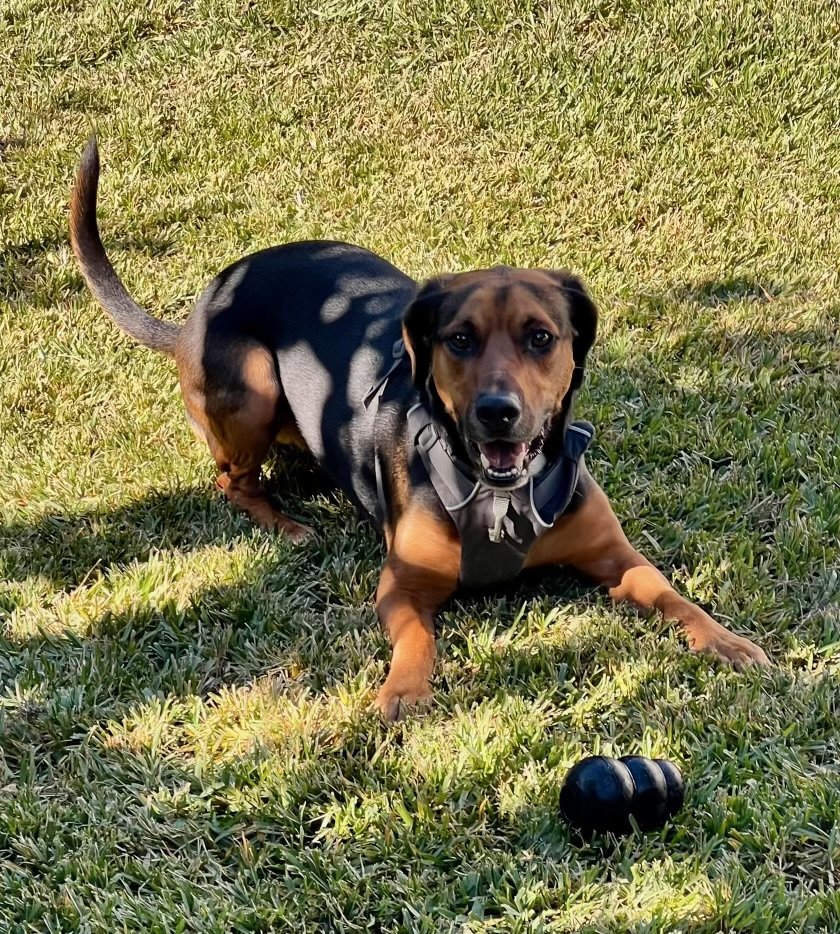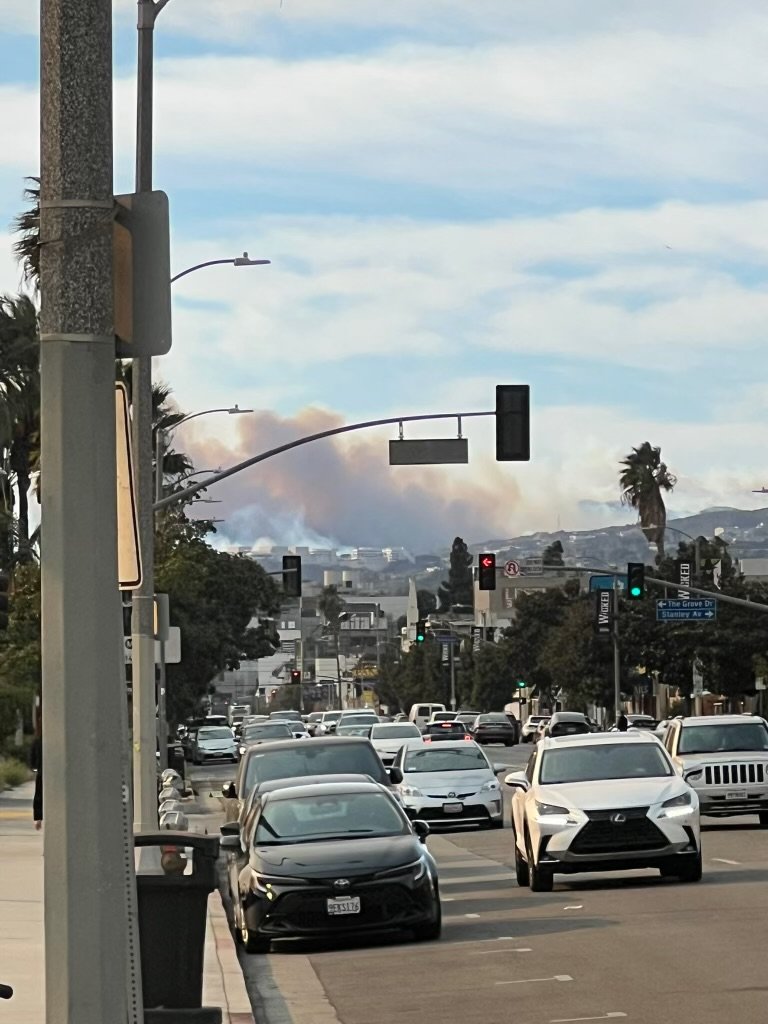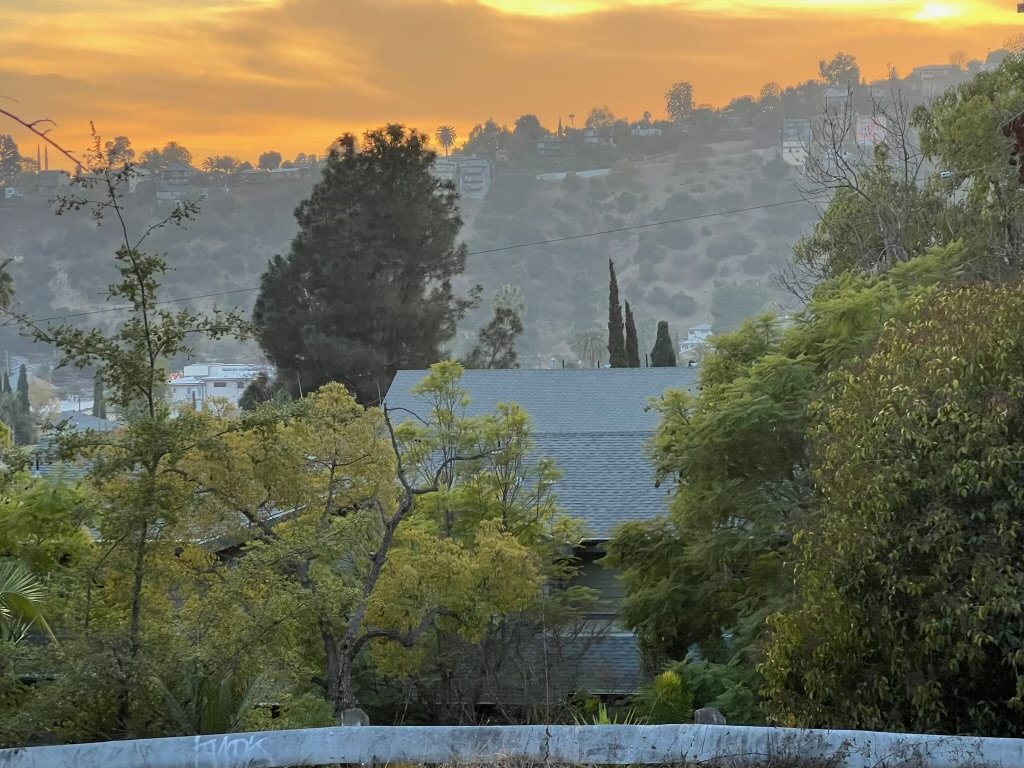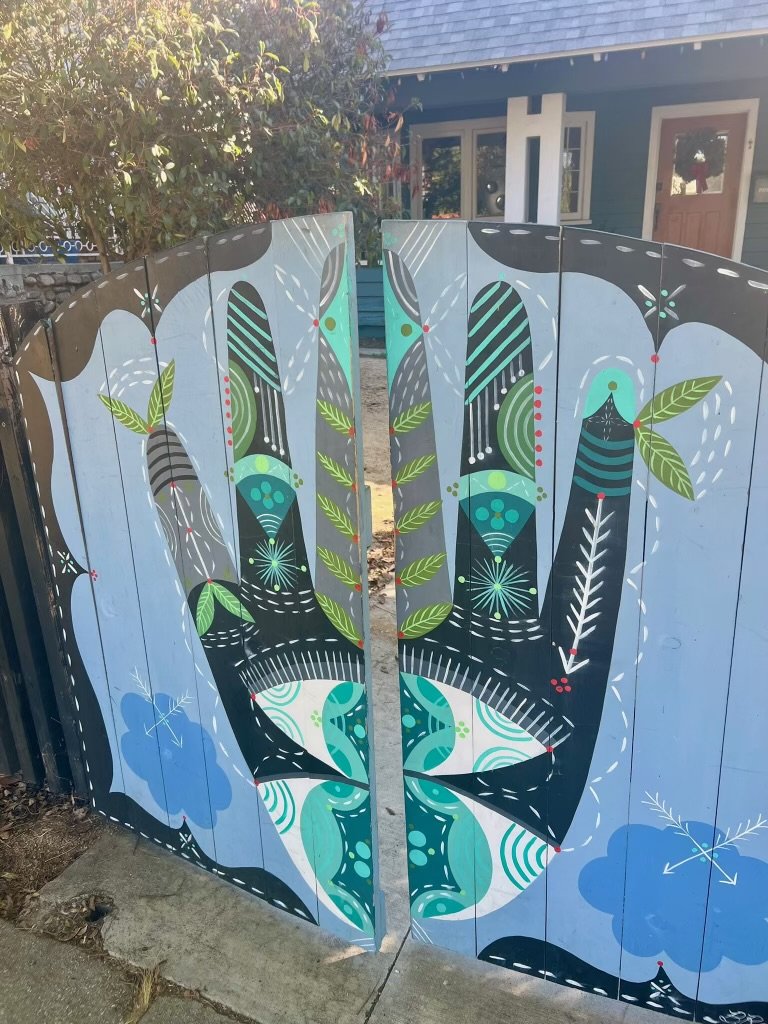What We Plant May Save Us
Welcome friends to WiLD, a portal into the musings of plants, nature, and whatever is top of mind. Thank you for taking time to read the first blog post of 2025. It's a privilege to have your attention and your time is valuable. If you have a few minutes to spend together, this post is very personal and potent. If it resonates with you, I would love to hear what you think.
Spring is nature’s irresistible call to notice. As green things begin to push their way upward and buds unfurl like delicate surprises, I am comforted by hope. Just like every year, new opportunities to learn and grow find us. I am learning that what we plant can dramatically impact our planet’s health and wellbeing. Choosing to include native plants in your garden can literally save our ecosystem, one bloom at a time. My belief and call to act is shaped through an experience living through the wildfires that devastated several communities in LA.
Earlier this year, I was spending time with my family in LA. We were there when the first fires were reported, saw the ash drift through the air, and got ready to evacuate. We didn’t drink the water and stayed in a state of nervous readiness. We wore masks, smelled smoke for several days, and watched the video footage of firefighters trying to save homes only miles away. When I got home, I kept dreaming of fires and waking up afraid. It’s easy to let fear have its way, so I write to process my feelings. I allowed this poem to surface, and tried to hear what it was saying to me.
What to Carry in a Fire
What to carry in a fire?
Only what you need
and can fit into two hands.
Your heart, my heart,
our dog, some food,
underwear and socks.
Quickly now, the keys!
Some water in bottles,
my purse, your wallet.
Hurry, it’s time to go.
Orange sky flickering,
Ash falling like gray snow,
Car doors shut against the smoke.
My heart, your heart,
Paws heavy on my lap.
Everything I love,
speeding along an LA highway,
held tenderly in a metal can.
When everything is in flames, what will I carry? What is truly important to me? What is worth saving? When there is an actual fire, your choices become very clear. You save what you love. You save who you love. You don’t give up. You find a way out. You find a way through…
My husband and I first learned about the fires while celebrating my birthday on January 7th. We walked through the gusts of the Santa Ana winds to get to a Portuguese restaurant. The wind blows branches off Palm trees and scatters refuse bins all over the street. I felt like I was caught in a hurricane of wind and dust as I pushed open the door to go inside. We ordered fabulous food, and I tried not to think about the fire. I continued to worry throughout our meal and wonder aloud how close we are to the fires. A journalist sitting next to us leans over and shows us pictures of the fire several miles away. He assured us that the fires would run up the canyon and that we had nothing to worry about here in urban LA. “We're safe here,” he said.
After our meal, we decided to drive to an overlook at a park to see the cityscape of LA for ourselves. As the Santa Ana winds blow, we watch a patch of skyline turn orange, and then flare to a bright orange. My stomach flutters with fear. As we navigate down the winding road, my thoughts are racing, and branches litter the parkway. I don't know where the water is. Water makes me feel safe. I realize I love knowing where the water is in my part of Virginia. I live near the James River Park System. Pretty much anytime, I can walk down to the river and be near the water. In LA, we were at the foothills of canyons, and water was nowhere near. In fact, I did not know at the time that it had not rained in 8 months.
Later that night, we went to sleep and woke up to an orange glow coming in through the windows. I open the front door to our little house, and ash flies through the sky like the flurries of snow. I shut it quickly because the air smells smoky like a campfire gone rogue. Our Airbnb hosts call to let us know they are leaving their house behind. We quickly pack a few things and drive over to get our daughter and her dog in Highland Park. Together, we leave the area looking for blue skies and air to breathe. We eat pizza in a park and try to figure out where to go next. Later, we learn the Eaton fire is 4 miles away from Highland Park. A community called Altadena is on fire, and nothing stops the fire from consuming the homes and schools there. The winds are too strong for the firefighters to fly over with water. We learn that another fire is burning in the Palisades, farther away, and smaller fires are growing around LA. Too many for me to track, I focus on the one closest to where we are staying and hope for the best.
We were fortunate. We don't have to evacuate because a highway separates us from the Eaton fire and prevents it from spreading to Highland Park. Finally, the Santa Ana winds die down and the firefighters can do their work. They are heroes. They are able to fly over and dump water over the fires, dig trenches, and rescue people and animals. Some people lose everything. I see them in trucks packed to the windows with stuff and families walking into neighborhood coffee shops looking dazed. I watch the news and LA is covered with smoldering fires. For many people in Altadena, it was an apocalyptic landscape. Homes, churches, and schools were gone. The response from the community was to reach out and help in any way they could. People from all walks of life were gifting clothes and serving hot food. Everyone was trying to figure out what was next. I spoke with a local shop owner who was folding free clothing for mothers who lost everything. “It’s the least I can do. It's all I can think to do,” she said. She still had her home in Altadena, but her children’s school was gone.
When I return home, I continue thinking about the fires. I dream about them. Why did it happen? I have to know why and what made everything burn so quickly. I read about the circumstances leading up to the fires. At first, there was a lot of rain. Unprecedented rain. Plants grew like weeds. And then there was no rain…no rain at all for eight months. Then, LA has one of the hottest summers in a long time. The non native plants dry up. The rain that usually comes in November never shows up. No rain in December either. Then the Santa Ana winds start to blow. Santa Ana winds are hot, dry winds from the desert that feel like God is holding a hairdryer to your face. Then a spark, then an ember flies in the wind. Months of dried-up plants catch fire like a year-old Christmas tree flaming up in seconds.
Was California always prone to burn like this? No. “Southern California is dominated by shrublands known as chaparral. This landscape was historically characterized by short, shrubby plants, and any native grasses were perennial, maintaining moisture and staying green for most of the year. Fires, when they occurred, were rare because lightning strikes were infrequent. When fires did ignite, they burned hot but wouldn’t spread far because the open gaps between plants acted as natural firebreaks.” (Read the entire article here.) The LA fires were fueled by non native plants. One in particular, the popular and non-native eucalyptus tree, fed the flames. Apparently, the leaves are incredibly flammable and oily, and the papery bark wood sloughed off the tree and carried embers up to half a mile away. Plants that were not native to California composed the fuel for the flames. I started thinking about the consequences of planting the Eucalyptus Tree in LA. Someone liked the way it smelled and thought it was pretty. They had no idea of the consequences.
If you have stuck with me this far along, I truly thank you. Maybe you are thinking what I am thinking. I have done this too. I just didn’t know. For example, I thought non native English Ivy was a great groundcover….Whoops! Now I know English Ivy weakens trees by reducing the tree's ability to photosynthesize when it covers up its leaves…Literally stopping trees from breathing. Now, when I see English Ivy climbing its way up the tree canopy, I cringe…and pull it up when I see it in my yard and elsewhere. Friends of the James River are taking care of our river and local parks by removing invasive plants. You can help them here. I had no idea of the consequences of this seemingly innocuous plant choice. I am learning about better choices for our landscapes. What we plant matters a lot. I truly think that what we plant may save us.
What could happen if we intentionally try to partner with Mother Nature? I've read a lot about Natives as something I should plant, but all of a sudden, the natives began to take on a different personality for me. Now I see them as Helpers. They help feed the birds, they help feed the pollinators, and in turn they feed us. The LA fire created some clarity for me and also some urgency. We have the ability right now to return and repair. We can make some different choices that will make a world of difference.
So where do we start? For me, that’s usually with a book in hand. I love Doug Tallamy’s book Nature’s Best Hope, which talks about how our backyard can be a vibrant place for ecological restoration. Or his pithy book How Can I Help? Saving Nature With Your Yard, which gives you a jumpstart on planting for your birds and pollinators. Doug Tallamy is an American entomologist, ecologist and conservationist. He is a professor in the Department of Entomology and Wildlife Ecology at the University of Delaware. He recommends starting in your own backyard by reducing your lawn and adding native plants that bloom throughout the season. Maybe start with that small neglected spot in your backyard. I think it's fun to start with blooming perennials in a sunny patch in your garden where you can see who is visiting. Curious about what your choices are? If you know your light needs (full sun - partial sun - shade) and know your soil, you are ready to get planting.
You can start learning more about Native Plants for your area here and see what they look like by visiting our own Low Line Garden here. Here is a fantastic resource to help you get started and learn more about the benefits of planting native plants. Maybe try one or two or three. It doesn’t have to be an all-or-nothing endeavor. Have fun. Play. Sometimes when everything seems like it's going up in flames, you discover what you are willing to live for. And what you are willing to change. "If half of American lawns were replaced with native plants, we would create the equivalent of a 20 million acre national park, nine times bigger than Yellowstone or 100 times bigger than Shenandoah National Park." - Doug Tallamy. I truly believe that choosing to include native plants in your garden can literally save our ecosystem, one bloom at a time. Won’t you join me? Thank you for your curiosity and openness to seeing new possibilities for you and your garden.
-See you in the Garden! Wendell
If you are new here, make sure you are subscribed to my newsletter. I send out monthly magic to your inbox. Once you subscribe, enjoy a free PDF download for a meadow garden design.






